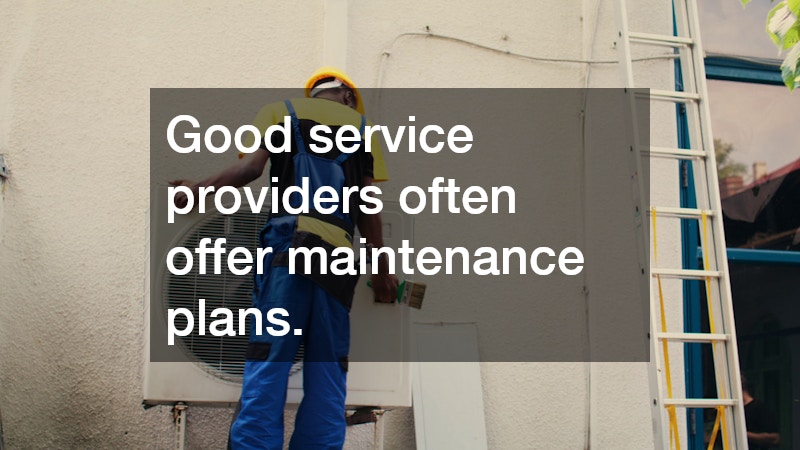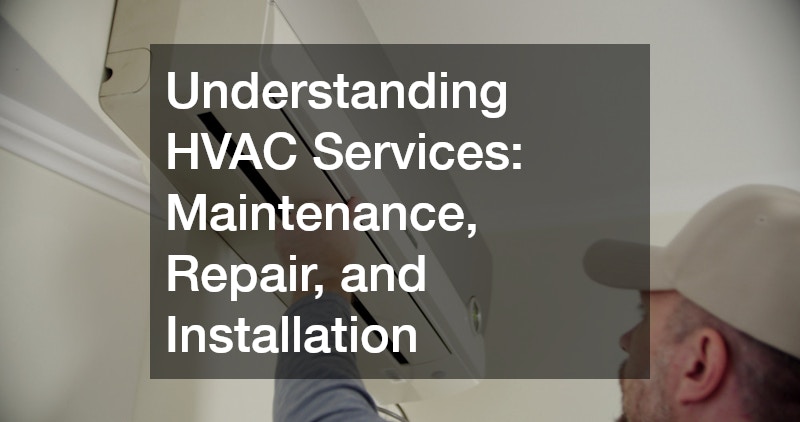A well-functioning heating, ventilation, and air conditioning system is essential for comfort, safety, and energy efficiency in any home or commercial building. As technology advances and climate demands shift, the systems responsible for regulating indoor temperatures play an even more important role. Whether you are a homeowner trying to understand routine upkeep or a property manager needing to plan for long-term system care, learning the basics of maintenance, repair, and installation can help you make informed decisions. When people talk about HVAC services, they are referring to a broad range of tasks that keep these systems running smoothly and efficiently. By understanding what these tasks involve, you can better protect your investment and maintain a healthy indoor environment.
How Preventive Maintenance Extends System Life
Regular maintenance is the foundation of HVAC system longevity. Just like a vehicle requires oil changes and inspections, heating and cooling systems need routine attention to maintain performance. Preventive maintenance typically includes inspecting key components, cleaning coils, checking refrigerant levels, calibrating thermostats, tightening electrical connections, and ensuring airflow is unrestricted.
These routine checks help technicians identify potential issues early, long before they develop into expensive breakdowns. For example, a clogged filter may seem like a minor concern, but over time it forces the system to work harder, raising energy costs and increasing wear on components. Addressing small issues promptly can add years to a system’s lifespan and keep utility bills in check.
Homeowners and building managers who commit to a regular maintenance schedule often see benefits such as better indoor air quality, more stable temperatures, reduced noise, and fewer unexpected shutdowns. Seasonal maintenance—usually performed before peak heating or cooling periods—ensures the system is ready for heavy use when temperatures become extreme.
What to Expect During Repair Work
Even with the best maintenance, mechanical systems eventually experience problems that require professional repair. HVAC systems have many moving parts, electrical components, and delicate electronics, so diagnosing issues often requires specialized tools and training. Common repair needs include refrigerant leaks, faulty compressors, malfunctioning thermostats, worn belts, and issues with blower motors or ignition systems.
During a repair visit, technicians typically begin by evaluating system performance, listening for unusual sounds, and checking diagnostic readings. Their goal is to identify the root cause rather than treating only the symptoms. For example, if a furnace frequently cycles on and off, the problem could stem from a thermostat issue, an airflow restriction, or a failing component within the unit. Accurate diagnosis ensures that the correct repair is made, preventing repeated call-backs and additional expenses.
Timely repairs can also prevent larger system failures. A minor refrigerant leak, left unaddressed, can lead to compressor damage—one of the most costly repairs in an air conditioning system. By addressing issues promptly, property owners can avoid major disruptions and keep their climate control systems operating reliably.
Key Considerations for System Installation
Installation is one of the most critical phases of HVAC system ownership. Even a high-quality unit can underperform if it is installed incorrectly or sized improperly for the building. A proper installation begins with a detailed assessment of the property, including square footage, insulation quality, number of windows, and local climate conditions. These factors help determine the correct system size and configuration.
An oversized system will cycle too frequently, leading to uneven temperatures, increased wear, and excessive humidity. Conversely, an undersized system will struggle to reach the desired temperature, running continuously and driving up energy costs. Proper sizing is essential for both performance and efficiency.
Professional installers also ensure ductwork is properly sealed, thermostats are placed in optimal locations, and all electrical and mechanical connections meet safety standards. Modern systems may require integration with smart controls or zoning features, which must be set up correctly to function as intended.
Choosing the Right Professionals
Selecting qualified professionals for maintenance, repair, and installation work is just as important as the work itself. Experienced technicians understand how to assess system needs, identify problems accurately, and recommend solutions based on the building’s specific requirements. Look for companies with a strong reputation for reliability, clear communication, and transparent pricing.
Good service providers often offer maintenance plans, which can help customers stay on schedule with routine care and catch issues early. They can also help determine when repair costs outweigh the benefits of keeping an aging system running. When replacement becomes necessary, these professionals can guide you through energy-efficient options and ensure the installation is handled properly from start to finish.
Understanding the essentials of maintenance, repair, and installation helps you make smart decisions that protect your climate control system and ensure year-round comfort. Whether you manage a commercial building or simply want to improve the comfort of your home, being informed empowers you to address issues early and work effectively with qualified professionals. Reliable HVAC services play a central role in keeping indoor environments comfortable, energy-efficient, and safe for everyone who uses the space.


